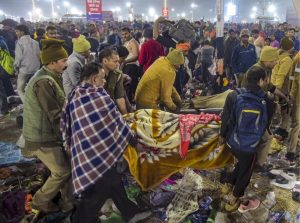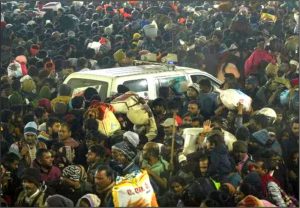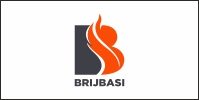
 Incident Overview
Incident Overview
On January 2025, a tragic stampede occurred at the Maha Kumbh Mela in Prayagraj, leading to 30 confirmed deaths and over 250 injuries. The catastrophe struck near Sector 14, where a massive surge of devotees attempting to reach the Triveni Sangam for the Shahi Snan (Royal Bath) resulted in a deadly crowd crush.
The aftermath of the disaster saw immediate and large-scale rescue efforts launched by multiple agencies, including the National Disaster Response Force (NDRF), State Disaster Response Force (SDRF), Uttar Pradesh Police, and Fire & Emergency Services.
This report details the rescue efforts, challenges faced by the response teams, medical assistance provided, and the key takeaways from this tragic event.
Timeline of Rescue Operations
8:30 AM – Stampede Begins
- Thousands of devotees push toward a narrow passage leading to the ghats, creating a dangerous bottleneck.
- Sudden crowd movement leads to tripping and falling, triggering panic.
- Reports indicate people being crushed, suffocated, and trapped under bodies.
 8:45 AM – First Emergency Calls Received
8:45 AM – First Emergency Calls Received
- Local police and Kumbh Mela control room receive distress calls about the stampede.
- Senior officials immediately deploy law enforcement and medical teams.
- The first responders include local police personnel and traffic marshals stationed at nearby checkpoints.
9:00 AM – NDRF & SDRF Teams Mobilized
- Four NDRF teams (40 personnel each) and two SDRF units are dispatched to the site.
- Fire brigade units and ambulances rush towards Sector 14.
- Loudspeaker announcements urge devotees to remain calm.
9:15 AM – First Rescues Begin
- Security personnel and volunteers pull out injured victims from the crowd.
- Cordon-off zones are created to clear access for ambulances.
- Police control the movement of incoming devotees to prevent further escalation.
9:45 AM – Medical Response & Casualty Evacuations
- Over 50 ambulances transport critically injured individuals to hospitals.
- Local health teams establish a makeshift triae center near the stampede site.
- Uttar Pradesh CM Yogi Adityanath orders an emergency medical response.
10:30 AM – Rescue Efforts Intensify
- Additional NDRF and SDRF teams arrive, bringing specialized crowd rescue equipment.
- Gas cutters and stretchers used to remove trapped individuals.
- Teams continue CPR and first aid administration to the injured.
11:30 AM – Casualty Identification & Crisis Support Begins
- Bodies are shifted to a temporary morgue for identification and postmortem.
- Government issues emergency helpline numbers for missing persons.
- Counseling and psychological support teams deployed for survivors and families.
Key Rescue Agencies & Their Roles
- National Disaster Response Force (NDRF)
- Lead rescue agency with 160+ personnel deployed.
- Used thermal imaging & body recovery equipment.
- Cleared debris and lifted injured from the crowd crush.
- State Disaster Response Force (SDRF)
- Assisted in crowd control and security reinforcement.
- Helped in medical evacuations and initial treatment.
- Uttar Pradesh Police & Rapid Action Force (RAF)
- Secured the stampede area and redirected pilgrims to safer routes.
- Used drones and surveillance cameras to identify congested areas.
- Fire & Emergency Services
- Deployed fire trucks and ambulances.
- Assisted in body recovery and medical aid.
- Medical & Health Teams
- Emergency response teams from Swaroop Rani Nehru Hospital, SRN Medical College, and Motilal Nehru Hospital handled treatment of 250+ injured persons.
- ICU beds were increased, and doctors were recalled from leave.
Challenges Faced During Rescue Operations
- Severe Overcrowding
- Millions of devotees made it difficult for rescuers to reach victims.
- Police struggled to control the ongoing influx of pilgrims.
- Narrow Pathways & Congested Routes
- The narrow lanes leading to the ghats created a bottleneck.
- Rescuers had to carry injured individuals manually in areas where ambulances could not enter.
- Lack of Immediate Medical Response at the Site
- There were not enough on-site medical stations near the affected area.
- Many injured suffered suffocation due to delays in evacuation.
- Communication Barriers
- Due to the high volume of mobile phone users, networks were jammed, delaying coordination.
- Emergency teams relied on handheld radios for communication.
- Panic & Misinformation
- False rumors led to further panic, making crowd dispersal more difficult.
- Some devotees resisted evacuation, fearing separation from their families.
Government Response & Compensation for Victims
Compensation Announced
- 5 lakh for families of deceased victims.
- 2 lakh for critically injured victims.
- 50,000 for those with minor injuries.
High-Level Inquiry Launched
- The Prayagraj District Administration formed an investigative committee to review failures in crowd management.
- A report is expected within 15 days, determining accountability for lapses.
Safety Measures for Future Events
- The government has ordered the installation of AI-powered crowd monitoring systems.
- More entry/exit routes will be created to prevent congestion.
- Stronger barricades & restricted pilgrim flow regulations will be enforced.
Eyewitness Accounts of Rescue Efforts
- Rahul Mishra, an NDRF Rescuer “It was chaos. We had to climb over bodies to pull people out. Many were unconscious by the time we reached them. It was a heartbreaking scene.”
- Sunita Sharma, Survivor “I was trapped under five people. I couldn’t breathe. Someone pulled me up, and I saw people lying on the ground, crying. I’m lucky to be alive.”
- Ankit Verma, Emergency Medical Officer
- “Many victims had suffered chest compression injuries. We had to revive people on the spot using CPR.”
Lessons Learned & Future Precautions
Advanced Crowd Flow Management
- Use of AI-driven surveillance and RFID wristbands to monitor crowd density in real time.
Emergency Assembly Points
- Designated safe zones within Mela grounds for immediate medical response.
Stricter Entry Regulations
- Segmented time slots for bathing rituals to avoid massive surges.
Better Rescue Infrastructure
- Mobile medical units stationed closer to high-density zones.
Improved Communication & Alerts
- Loudspeaker warning systems to alert devotees about dangerous crowd levels.
Final Words: A Tragedy That Must Not Repeat
The Maha Kumbh Mela stampede has exposed critical gaps in crowd management and emergency preparedness at large religious events. While rescue teams performed exceptionally under challenging conditions, the loss of lives is a painful reminder of the urgent need for better safety measures.
With stronger regulations, technology-driven crowd monitoring, and enhanced emergency response capabilities, authorities must ensure that such a tragedy never happens again.
This is a developing story. More updates will follow as investigations continue.























































